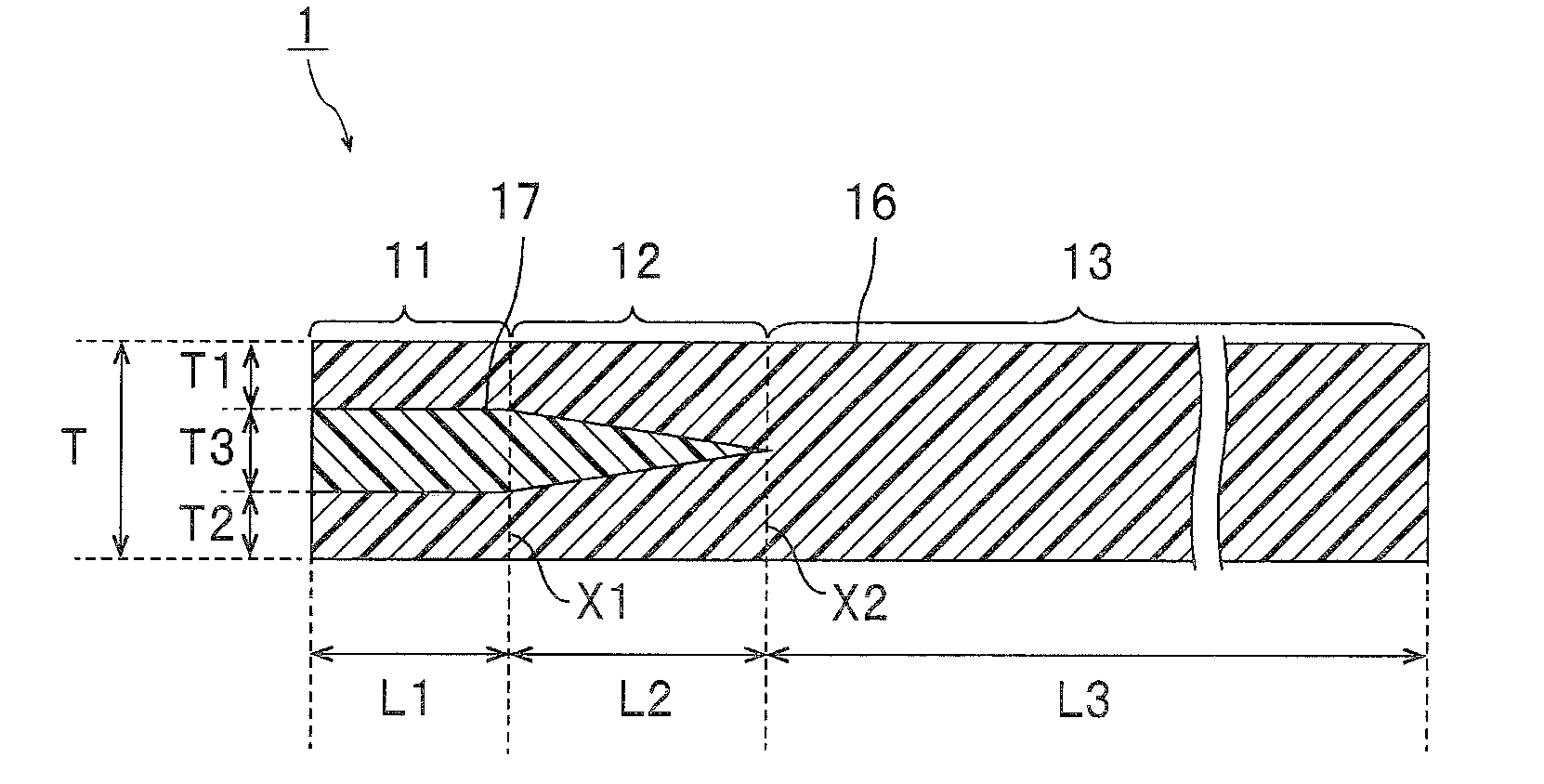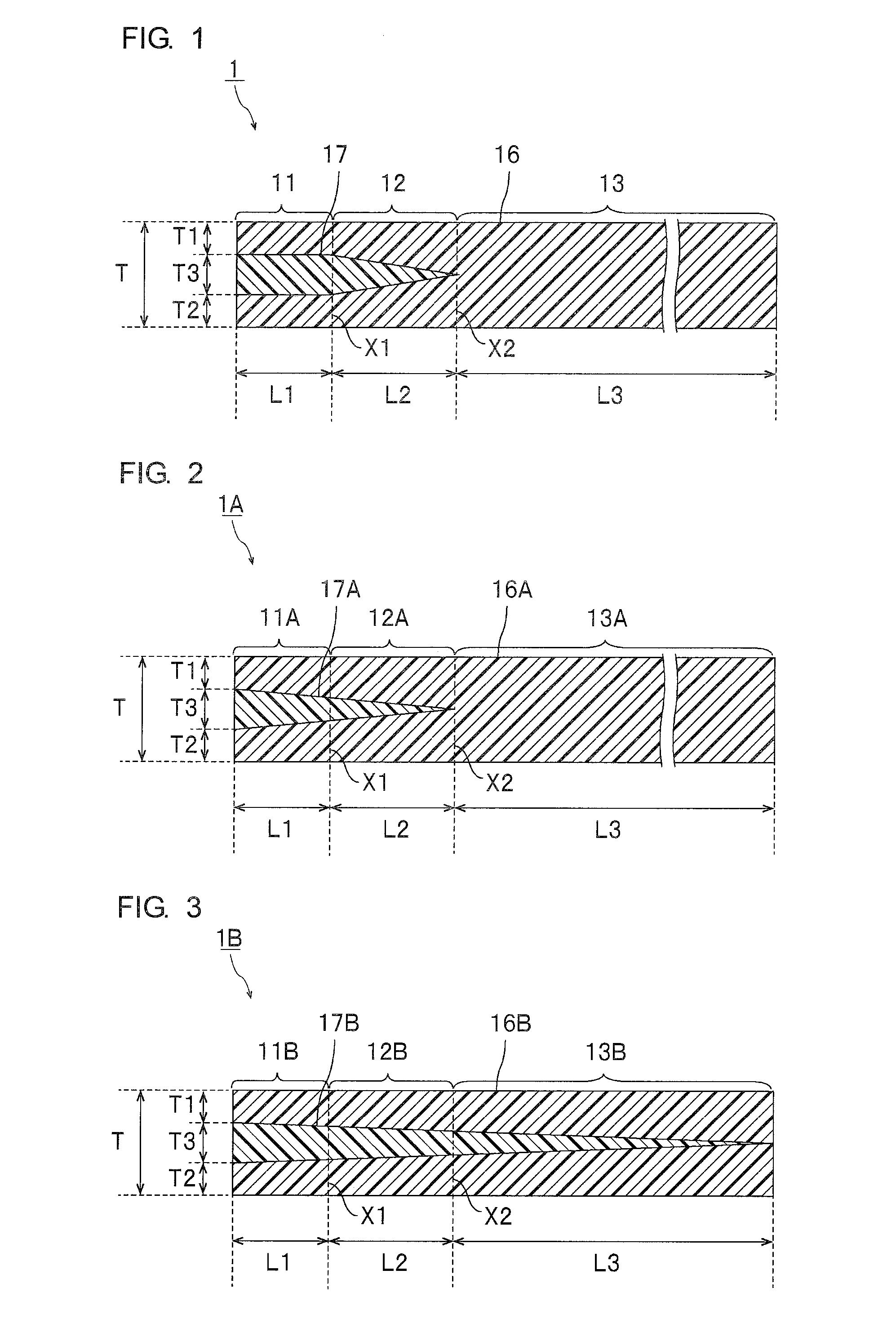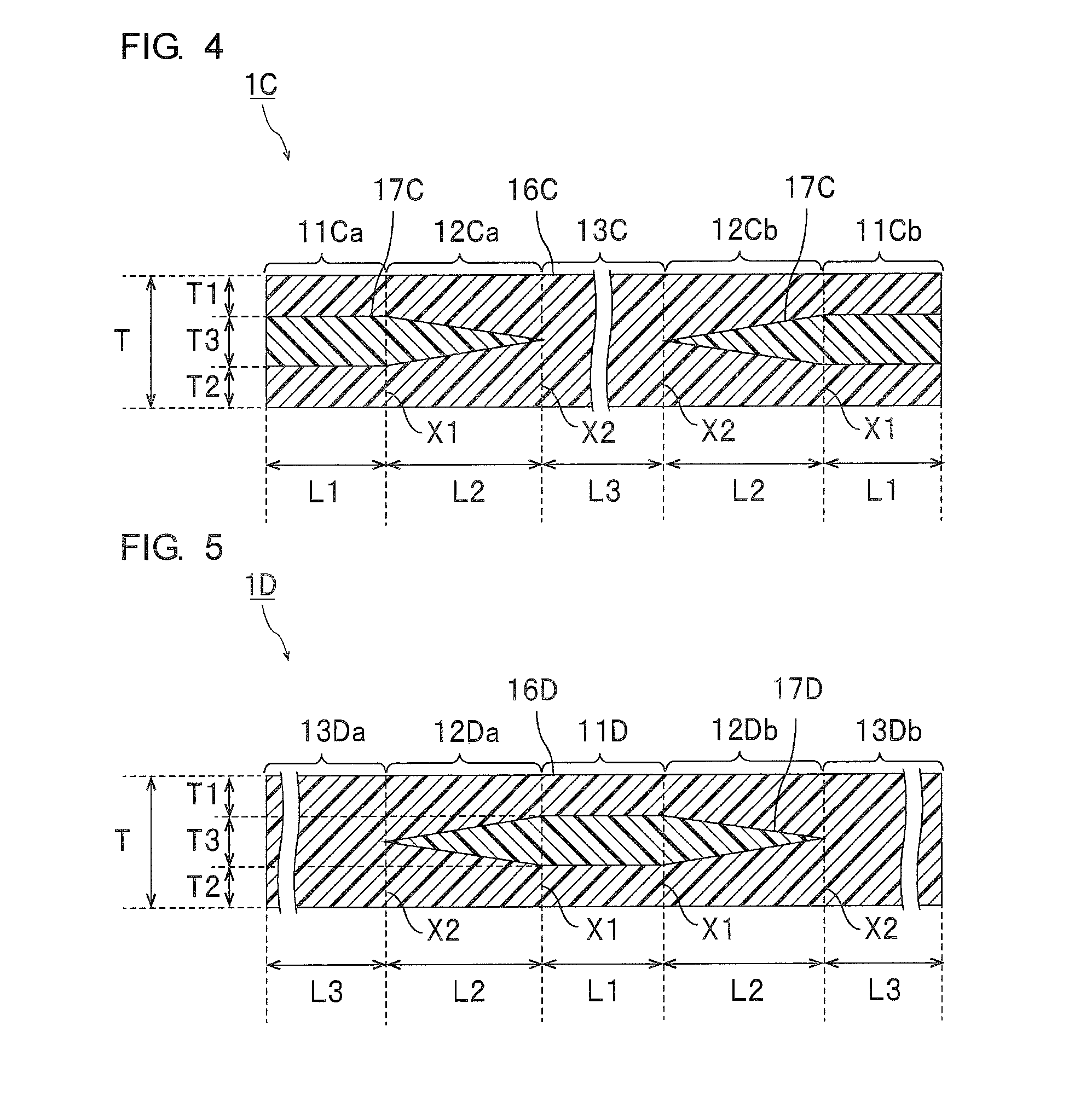Intermediate film for laminated glass and laminated glass
a technology of laminated glass and intermediate film, which is applied in the direction of chemistry apparatus and processes, synthetic resin layered products, transportation and packaging, etc., can solve the problem of inability to visually recognize a person or an object positioned behind the laminated glass, and achieve excellent privacy protection properties and suppress color irregularities
- Summary
- Abstract
- Description
- Claims
- Application Information
AI Technical Summary
Benefits of technology
Problems solved by technology
Method used
Image
Examples
example 1
Preparation of First Resin Composition for Forming First Resin Layer A (First Surface Layer) and First Resin Layer B (Second Surface Layer)
[0194]Polyvinyl butyral A (the acetylation degree of 1% by mole, the butyralization degree of 69% by mole, the content ratio of the hydroxyl group of 30% by mole) obtained by acetalizing polyvinyl alcohol (the average polymerization degree of 1700) with n-butyraldehyde was prepared. To 100 parts by mass of this polyvinyl butyral A, 39 parts by mass of triethylene glycol-di-2-ethylhexanoate (a plasticizer, 3GO) was added and thoroughly kneaded with a mixing roll to obtain a first resin composition.
[0195](Preparation of Second Resin Composition for Forming Second Resin Layer (Intermediate Layer))
[0196]To 100 parts by mass of the polyvinyl butyral A, 40 parts by mass of triethylene glycol-di-2-ethylhexanoate (a plasticizer, 3GO) and calcium carbonate particles (inorganic particles, the weight average particle diameter of 5.0 μm) in an amount that th...
examples 2 to 10
[0205]An interlayer film and a sheet of laminated glass were prepared in the same manner as that in Example 1 except that the contents of calcium carbonate particles and a plasticizer were set to those listed in the following Table 1 and the lengths and thicknesses of respective layers in the resulting interlayer film were set to those listed in the following Table 1, at the time of preparing the interlayer film. In this connection, with regard to the boundary between the dark color part and the gradation part in the obtained interlayer film, at the time of preparing laminated glass described below and measuring the parallel light transmittance, a portion where the parallel light transmittance is 30% was defined as the boundary, a region where the parallel light transmittance is less than or equal to 30% was defined as the dark color part, and a region where the parallel light transmittance is greater than 30% and less than 60% was defined as the gradation part.
example 11
Preparation of First Resin Composition for Forming First Resin Layer (First Surface Layer)
[0208]To 100 parts by mass of the polyvinyl butyral A, 39 parts by mass of triethylene glycol-di-2-ethylhexanoate (a plasticizer, 3GO) was added and thoroughly kneaded with a mixing roll to obtain a first resin composition.
[0209](Preparation of Second Resin Composition for Forming Second Resin Layer (Intermediate Layer))
[0210]To 100 parts by mass of the polyvinyl butyral A, 40 parts by mass of triethylene glycol-di-2-ethylhexanoate (a plasticizer, 3GO) and calcium carbonate particles (inorganic particles, the weight average particle diameter of 5.0 μm) in an amount that the content thereof in 100% by mass of the resulting resin composition becomes 5.9% by mass were added and thoroughly kneaded with a mixing roll to obtain a second resin composition.
[0211](Preparation of Interlayer Film for Laminated Glass)
[0212]The second resin composition was supplied to a main extruder. Moreover, the first re...
PUM
| Property | Measurement | Unit |
|---|---|---|
| light transmittance | aaaaa | aaaaa |
| light transmittance | aaaaa | aaaaa |
| temperature | aaaaa | aaaaa |
Abstract
Description
Claims
Application Information
 Login to View More
Login to View More - R&D
- Intellectual Property
- Life Sciences
- Materials
- Tech Scout
- Unparalleled Data Quality
- Higher Quality Content
- 60% Fewer Hallucinations
Browse by: Latest US Patents, China's latest patents, Technical Efficacy Thesaurus, Application Domain, Technology Topic, Popular Technical Reports.
© 2025 PatSnap. All rights reserved.Legal|Privacy policy|Modern Slavery Act Transparency Statement|Sitemap|About US| Contact US: help@patsnap.com



